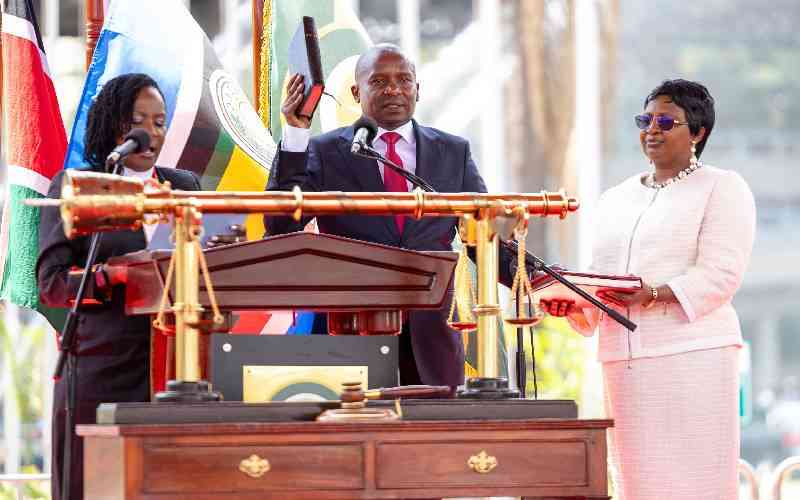Thomas Onyango, 25, from Masinde Muliro University of Science and Technology has invented a charcoal ceramic jiko that converts unused heat energy to electricity.
“This innovation was triggered by the high need and consumption of electricity in the country with few sources of the energy. Through this jiko, one can easily transform the energy that would have otherwise gone into waste to something resourceful,” Mr Onyango tells Hashtag.
Onyango says he felt the need to fill the niche that has been created by high consumption of electricity through means that even those in the rural areas can easily identify with.
“This project can work well for centres where frequent cooking of meals over long periods occur, like in high schools, hotels and rural homes.”
This jiko is built in a way that it has a cold and hot plate on the thermal electric generator responsible for ensuring stable temperature regulations.
“The heat source is measured by thermocouples to establish the temperature input applied to the thermal electric generators hot side. At the cold plate, the heat sink and cooling fan are the integrated method of the cooling system,” says the fourth-year renewable energy student.
Mr Onyango hopes that his project will help reduce global warming in the world as the energy that is generated from the jiko is stored in batteries awaiting use at the homestead level.
“Despite the fact that through this method users who are not on the electricity grid will access power for their domestic use, it will also help in reducing the amount of heat that is released into the atmosphere that leads to global warming,” he says.
He uses a thermal electric generator that converts the heat energy to electricity before channeling it to the battery for storage. A single thermal electric generator can charge up to a 12 voltage battery that is capable of lighting six energy saving bulbs or powering a television set for at least three hours.
“A medium jiko when its space is fully maximised can contain up to six generators that in return help the user get lighting system for the whole night and use more electrical appliances with the energy stored. The only trick here is to balance between the number of generators and batteries you have to store the energy in,” he adds.
 The Standard Group Plc is a
multi-media organization with investments in media platforms spanning newspaper
print operations, television, radio broadcasting, digital and online services. The
Standard Group is recognized as a leading multi-media house in Kenya with a key
influence in matters of national and international interest.
The Standard Group Plc is a
multi-media organization with investments in media platforms spanning newspaper
print operations, television, radio broadcasting, digital and online services. The
Standard Group is recognized as a leading multi-media house in Kenya with a key
influence in matters of national and international interest.
 The Standard Group Plc is a
multi-media organization with investments in media platforms spanning newspaper
print operations, television, radio broadcasting, digital and online services. The
Standard Group is recognized as a leading multi-media house in Kenya with a key
influence in matters of national and international interest.
The Standard Group Plc is a
multi-media organization with investments in media platforms spanning newspaper
print operations, television, radio broadcasting, digital and online services. The
Standard Group is recognized as a leading multi-media house in Kenya with a key
influence in matters of national and international interest.








